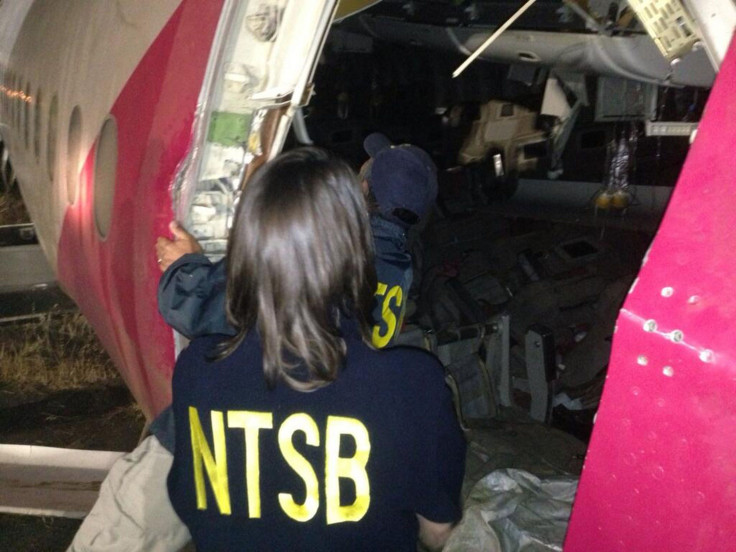Black Boxes Recovered From SFO Crash

Update 2:15 p.m. EDT: San Francisco Fire Department Chief Joanne Hayes-White said 19 people remain hospitalized, six of them in critical condition.
------------------------------------
The flight recorders from Asiana Airlines Flight 214, which crashed on landing in San Francisco Saturday, have been recovered and are on the way to Washington, the National Transportation Safety Board said Sunday.
The passengers killed on the Boeing 777 have been identified as Chinese students Wang Linjia and Ye Mengyuan, both 16, CNN reports. Medics found the girls’ bodies on the runway, next to the burning wreckage.
Remarkably, 305 others on the plane survived the crash. At total of 70 Chinese students and teachers were headed to summer camp in the United States, China's state-run Xinhua news agency reported.
"We're lucky there hasn't been a greater loss of life," San Francisco Fire Chief Joanne Hayes-White said.
"When we went out there last night and took a look at the aircraft, you can see the devastation from the outside of of the aircraft — the burn through, the damage to the external fuselage. What you can't see is the damage internally, and that is really striking," NTSB Chairwoman Deborah Hersman said on CNN's "State of the Union" Sunday. "We're going to have to corroborate a lot of information: the radar data, the ATC information and the flight data recorder parameters and also interview the pilots."
“We have talked with law enforcement officials who spoke with the pilots last night and we hope to interview them soon,” she said after flying overnight to San Francisco.
Hersman said the seven-year-old plane was equipped with current navigation tools to assist landing, including recent advances in GPS technology. “A lot of this is not about the plane telling him, it’s about the pilot’s recognition of what’s going on. . . to be able to assess what’s happening and make the right inputs to make sure they’re in a safe situation,” she said. “That’s what we expect from pilots. We want to understand what happened in this situation.”
While 182 passengers and crew were taken to hospitals with injuries ranging from spinal fractures to bruises, another 123 managed to escape unharmed.
Among the 291 passengers were 141 Chinese, 77 South Koreans, 61 Americans and one Japanese, Asiana Airlines said. The airline is one of two major airlines in South Korea; the other is Korean Air.
In Seoul Sunday morning, Asiana Airlines President Yoon Young-doo bowed and said: "I am bowing my head and extending my deep apology" to the passengers, their families and the South Korean people over the crash, CBS reported.
Four pilots were aboard the plane and they rotated on a two-person shift during the flight, said South Korea’s Ministry of Land, Infrastructure and Transport. The two at the controls at the time of crash were Lee Jeong-min and Lee Gang-guk.
Yoon described the pilots as skilled and experienced, and that the accident probably was not due to pilot error. But he also said, "For now, we acknowledge that there were no problems caused by the 777-200 plane or engines."
Capt. Chesley Sullenberger, the pilot famous for the “Miracle on the Hudson” emergency landing in 2009, told KCBS that current construction at SFO may be examined as a factor in the Asiana crash. He said the FAA-mandated construction is intended to increase the safety zone of the runway by moving it farther away from the seawall near where the plane crash landed.
© Copyright IBTimes 2025. All rights reserved.





















